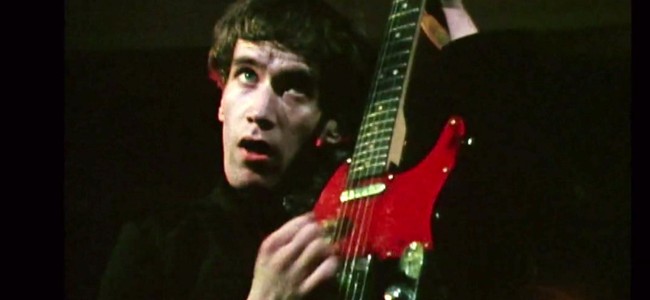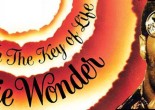
SXSW Film: Julien Temple on The Ecstasy of Wilko Johnson

It’s not surprising that a conversation with director Julien Temple should turn to music. He’s the go-to director for music documentaries, particularly those that profile the UK rock and punk scene of the ‘70s and ‘80s. So it’s almost a certainty that discourse on record albums and cassettes should get tossed about.
“I used to drive around with Joe Strummer and he would stop at service stations because they still had remainder bins of cassettes,” says Temple. “It meant the journey, down the motorway, was a long one.”
Temple’s latest film The Ecstasy of Wilko Johnson follows the amazing guitarist for the English pub rock band Dr. Feelgood, as he learns of a diagnosis of terminal cancer. Wilco, known for his flamboyant chop attack style of playing, starts making appearances and even records an album with Roger Daltry.
As The Ecstasy of Wilko Johnson unwinds the story repeatedly merges with clips from classic films. Films dealing with themes of death: The Seventh Seal, A Matter of Life and Death, Cocteau’s Orpheus, Holy Mountain, Simon of the Desert, a British television production of Hamlet at Elsinore starring Christopher Plummer (look closely for Michael Caine as Horatio in the background of one shot from this 1964 teleplay), Stalker, The Color of Pomegranates, and a few others. Temple deconstructs the subject matter of Johnson’s terminal cancer by drawing parallels to imagery from 20th century cinema. Shots of a Don Giovanni character walking along the jetty are Temple himself in costume, shooting some connecting tangential links to the story on a day when Wilco was unable to show up.
“Working with those narrative images from movies came from another film I was doing about Wilco [Oil City Confidential] and that was because there’s so little footage of Dr. Feelgood in existence. Temple explains how Dr. Feelgood came in at the end of the “hippie era” and carried the then current musical momentum forward. And how now they are all but forgotten. “I thought I could use British B-movies from the ‘50s, which is in itself a forgotten genre,” says Temple. “You’re telling your story but you’re also operating on other levels. At that point we couldn’t license all the films so I reenact some of them. Some of the films you see are films that I love, that are the reason I started making films. I refract Wilko’s story through other films that deal with the same theme. The subject helped us license these clips, so they didn’t hold us to ransom, charging fees that a film like this couldn’t afford.”
Even as we prepare to face the unavoidable Wilco has an operation that results in a miracle cure of sorts. A tumor is removed that weighs as much as a big baby.
In the end, Wilco returns to the jetty seen on the cover of Dr. Feelgood’s first LP, the 1975 release “Down By the Jetty.” Wilco proceeds to rock out in his patented playing mode, now bald, old and having kicked cancer’s ass. “They would come back from their city gigs, like bank robbers raiding English pubs, and come back in the early hours of the morning and smoke their last joint on the jetty next to their home.” You cannot exit from this film without feeling good yourself.
The Ecstasy of Wilco Johnson, Which had its world premiere at SXSW last week plays one last time at the film festival on Friday, March 20, at the Alamo Lamar theater.
- Michael Bergeron




